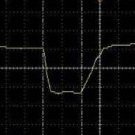Search the Community
Showing results for tags 'orangepizeroplus2-h3'.
-
Hi! SBC : OrangePi Zero 2 + (H3) Distro: ARMBIAN 5.76 stable Debian GNU/Linux 9 (stretch) 4.19.21-sunxi First when I ran : sudo armbianmonitor -u reply is : System diagnosis information will now be uploaded to Please post the URL in the forum where you've been asked for. Now my problem: I am using Armbian for quite a time and it is wonderful. I am trying to connect a waveshare clone 7 inch lcd with a 800x480 resolution, as the EDID information which lcd provides is broken, I have to force EDID firmware for 800x480 which is already available in the /lib/firmware/edid directory , previously it was working in mainline kernel , but now it refuse to load the same as I upgraded to stretch 4.19.21. /boot/armbianEnv.txt: verbosity=1 logo=disabled console=both edid=0 disp_mode=800x480 extraargs=drm.edid_firmware=edid/800x480.bin overlay_prefix=sun8i-h3 overlays=analog-codec usbhost2 usbhost3 rootdev=UUID=b0cad4ec-9479-4799-9d45-6ca4d9b3da22 rootfstype=ext4 usbstoragequirks=0x2537:0x1066:u,0x2537:0x1068: dmesg : 1.895908] platform HDMI-A-1: Direct firmware load for edid/800x480.bin failed with error -2 [ 1.895916] platform HDMI-A-1: Falling back to syfs fallback for: edid/800x480.bin [ 62.458285] [drm:drm_load_edid_firmware] *ERROR* Requesting EDID firmware "edid/800x480.bin" failed (err=-11) [ 63.867927] platform HDMI-A-1: Direct firmware load for edid/800x480.bin failed with error -2 [ 63.867943] platform HDMI-A-1: Falling back to syfs fallback for: edid/800x480.bin [ 64.141303] [drm:drm_load_edid_firmware] *ERROR* Requesting EDID firmware "edid/800x480.bin" failed (err=-11) if I change the /boot/armbianEnv.txt file as under extraargs=drm.edid_firmware=edid/800x480.bin to extraargs=drm.edid_firmware=edid/800x600.bin dmesg: [ 1.893325] [drm] Got built-in EDID base block and 0 extensions from "edid/800x600.bin" for connector "HDMI-A-1" [ 3.194872] [drm] Got built-in EDID base block and 0 extensions from "edid/800x600.bin" for connector "HDMI-A-1" it works for 800x600 resolution , so maybe kernel is loading 800x600.bin but not 800x480.bin. Kindly suggest me a solution. Best regards
-
I installed Armbian_5.75_Orangepizeroplus2-h3_Debian_stretch_next_4.19.20. But it can't boot up. These image can boot up. Armbian_5.65_Orangepizeroplus2-h3_Debian_stretch_next_4.14.78 Armbian_5.69_Orangepizeroplus2-h3_Debian_stretch_next_4.19.13
-
Issue found! Orange PI changed eMMC from KLM8G1GETF to KLM8G1WEPD. The difference is eMMC 5.0 vs 5.1 and maybe more. The key things is that Armbian (checked using 5.35 and the latest one) does not see this memory (fdisk -l)!! I have noticed it on OPI0 Plus 2 H3. PCB boards are the same, only memory model no. difference. Someone solved it or noticed the same? Confused 🤨
-
I have perfectly equal Orange Pi Zero Plus 2 H3 boards in their original case - booting from eMMC. Test conditions are: WiFi Hotspot enabled, HDMI off, CPU idle, CPU governor: performance, CPU freq. 240MHz - 1.1 GHz, kernel 4.14.84 Xiaomi Mi5 Charger as psu, 2.4A usb cable armbianmonitor gives me a temp of ~50°C on one board (idle@1.1GHz) and a temp of 65°C on the other board (same conditions, CPU starts throttling here to ~960 MHz). The temp gets so high, that after an apt-get update/upgrade and reboot the opizero plus2 would not boot with an error msg that the temp is too high. The temp seems to be correct more or less, since also the power consumption is significantly higher. While the 50°C board draws ~1.5W, the 65°C board draws ~1.8W. I have no explanation for this...
-
Can anyone suggest a command line command that would return the status of the connected HDMI monitor? Whether it is on standby or not or something that might help to determine if the display is active or not. I'm currently using Armbian Xenial on a H3 Orange Pi Zero Plus 2. Thanks
-
Hello, I currently installed Opi0 plus2 h3_Debian_stretch_next_4.14.78 but when I boot up my device, red led blinks 2times then pause and repeating again. What does it mean? I have never seen this blinking red led behaviour in previous Armbian releases.
-
Hello... I've got an Orange Pi Zero Plus 2 H3 with Armbian Stretch. Kernel: 4.14.70-sunxi armbianEnv.txt: I did: cp -a /lib/firmware/ap6212/fw_bcm43438a1.bin /lib/firmware/brcm/brcmfmac43430-sdio.bin dmesg when searching for "brcm" gives me: [ 8.123186] brcmfmac: brcmf_fw_map_chip_to_name: using brcm/brcmfmac43430-sdio.bin for chip 0x00a9a6(43430) rev 0x000001 [ 8.256708] brcmfmac: brcmf_c_preinit_dcmds: Firmware version = wl0: Oct 8 2016 15:31:47 version 7.46.57.4.ap.r4 (A1 Station/P2P) FWID 01-3621395e es6.c5.n4.a3 In /etc/default/ap6212 I have: PORT=ttyS1 But the script /etc/init.d/ap6212-bluetooth is failing... with the error "Initialization timed out." Is there any "how-to" for the Orange Pi Zero Plus 2 to get Bluetooth working?
-
Hi there, I've just got my first H3 board (OPi Zero +2) and I'm interested in learning how boot process works in detail, with a focus on Security ID features. As far I can see there's not that much documentation about S/NBROM (essentially linux-sunxi's Wiki and Allwinner-info git repo) and what's supposed to be H3's NBROM (header 1100, 1100, 1633) looks like slightly different from A10's one (from git) at first glance. Is there anyone here who has already worked on it and/or has info/symbols/pseudocode/whatever might speed up the reversing process? Thank you!
-
Hi, I built a fresh Armbian Image from scratch (using Armbian build system). After that I used Etcher to burn .img file to SD card. Everything works great, but U-Boot shows, that there is no environment. I used saveenv and fixed a problem. Then I installed Armbian into internal memory (eMMC), same message about environment, I tried fix it same way, using saveenv, but I get only an error message and infinite loop. Screenshot attached. How I can fix that? UPD: My board - Orange Pi Zero Plus 2 Kind regards
-
Dear Community, I am actively using an Orange Pi Zero Plus 2 board and I want to build U-Boot mainline by myself. I donwloaded mainline version from Denx's git, but when I'm doing configuration for Orange Pi Zero Plus 2. it uses H5 chip, but my board works with H3. During building Armbian Images, build system downloads latest U-Boot version and build it for H3 chip. I'm new to u-boot and maybe someome will help to find propper configs. Kind regards
-
Dear Сommunity, I've got an Orange Pi Zero Plus2, it has a WiFi only, no an Ethernet interface. But I want to use a TFTPBoot for my project. That's why I've got two questions: How I can configure/compile U-Boot with WiFi support? And how I can configure it for usage with TFTPboot? Kind regards, Bread Lee
-
Hi friends, one question - this camera works with Orange Pi zero2Plus for me (mostly). But do I need to use always the green PCB with camera, or can I directly plug in the small black camera with its brown ribbon to Orange Pi? Should it work without green PCB or not? Many thanks.
-
Hi, First of all sorry for my bad English. I am trying play video on my OrangePi Zero2+ H3 and 7inch waveshare touch screen. I couldn't get the touch screen work with Armbian 5.38 - 3.xx kernel. (I downloaded the Armbian Xenial desktop legacy kernel 3.4.y from website. In this version, mpv plays video with hardware acceleration) Then I updated to Armbian 5.44 - 4.xx kernel (I downloaded the Armbian Stretch mainline kernel 4.14.y from website.) then 7inch touch screen started to work but this time no hardware acceleration. It works "mpv vid.mp4" with dropped frames and very high CPU usage. But it gives error when I try to start video with "mpv --vo=vdpau --hwdec=vdpau vid.mp4". It says: "[vo/vdpau] Error when calling vdp_device_create_xll" No matter I tried it doesn't work. I tried to reinstall mpv, vdpau, libump etc (http://linux-sunxi.org/User:Rellla/Armbian). One more thing, there is no /dev/mali file in 5.44. but there was in 5.38. What am I doing wrong? Thanks in advance.
-

Leds section missing in devicetree on orangepizeroplus2 H5
Dennboy posted a topic in Allwinner sunxi
Dear all, I discovered that the leds section is missing in the devicetree of orangepizeroplus2 H5 (at least upto kernel 4.14.39), and had to write an overlay to get them to work. The overlay has been attached. I've added this overlay file to /boot/overlay-user/ and added the overlay in /boot/armbianEnv.txt as follows: Kind regards, Dennis sun50i-h5-orangepi-zeroplus-leds.dts -
Hey, I've got an Orange Pi Zero Plus 2 (H3) with Armbian 5.41 and mainline 4.14.18 with Debian Stretch. If I try to run X11 with: sudo startx I get the following error: X.Org X Server 1.19.2 Release Date: 2017-03-02 X Protocol Version 11, Revision 0 Build Operating System: Linux 4.9.0-4-armmp-lpae armv7l Debian Current Operating System: Linux orangepizeroplus2 4.14.18-sunxi #24 SMP Fri Feb 9 16:24:32 CET 2018 armv7l Kernel command line: root=UUID=bab2d356-e17e-4857-836a-5fc44cbf541f rootwait rootfstype=ext4 console=tty1 console=ttyS0,115200 hdmi.audio=EDID:0 disp.screen0_output_mode=1920x1080p60 panic=10 consoleblank=0 loglevel=1 ubootpart=451adcfc-01 ubootsource=mmc usb-storage.quirks=0x2537:0x1066:u,0x2537:0x1068:u sunxi_ve_mem_reserve=0 sunxi_g2d_mem_reserve=0 sunxi_fb_mem_reserve=16 cgroup_enable=memory swapaccount=1 Build Date: 16 October 2017 09:48:39AM xorg-server 2:1.19.2-1+deb9u2 (https://www.debian.org/support) Current version of pixman: 0.34.0 Before reporting problems, check http://wiki.x.org to make sure that you have the latest version. Markers: (--) probed, (**) from config file, (==) default setting, (++) from command line, (!!) notice, (II) informational, (WW) warning, (EE) error, (NI) not implemented, (??) unknown. (==) Log file: "/var/log/Xorg.1.log", Time: Wed May 16 19:22:28 2018 (==) Using config directory: "/etc/X11/xorg.conf.d" (==) Using system config directory "/usr/share/X11/xorg.conf.d" MESA-LOADER: failed to retrieve device information gbm: failed to open any driver (search paths /usr/lib/arm-linux-gnueabihf/dri:${ORIGIN}/dri:/usr/lib/dri) gbm: Last dlopen error: /usr/lib/dri/sun4i-drm_dri.so: cannot open shared object file: No such file or directory failed to load driver: sun4i-drm gbm: failed to open any driver (search paths /usr/lib/arm-linux-gnueabihf/dri:${ORIGIN}/dri:/usr/lib/dri) gbm: Last dlopen error: /usr/lib/dri/kms_swrast_dri.so: cannot open shared object file: No such file or directory failed to load driver: kms_swrast gbm: failed to open any driver (search paths /usr/lib/arm-linux-gnueabihf/dri:${ORIGIN}/dri:/usr/lib/dri) gbm: Last dlopen error: /usr/lib/dri/swrast_dri.so: cannot open shared object file: No such file or directory failed to load swrast driver couldn't get display device I have an Orange Pi Zero (H3) with the same Armbian and Kernel version and there no error occurs. Here is my Xorg.1.log: I can't figure out whats the difference, maybe the HDMI? And how I can solve this problem. I would appreciate any help. Thanks
-
Hello, I installed ARMBIAN 5.38 stable Debian GNU/Linux 9 (stretch) 4.14.14-sunxi on H3 OpiZeroPlus2 board and temperature is 60C (just after boot, nothing is running, CPU 0.5%) Is it normal? P.S. I saw overheating problem on H2+ OPi boards, but no idea if H3 also suffers from this.
-
Hi there, tomorrow I should obtain my OPi Zero Plus2. I see it does not have USB port (just GPIO for USB, so I could solder USB port for it with GPIO, no problem). Then, I will need to install my own raspbian.img on eMMC (I am using read only system). Till now I installed it on many SD cards to another Opi Zero's and used it so (because of lack eMMC). But how to install it on Opi Zero Plus2? Do I need to install it on SD card first and then go with nand-sata-install? Honestly, I would like to install it (the best) with USB or some other way, because I will need to install dozen of pieces and it is pretty time consuming to install if from SD card (and secondly I don't know if read-only images will install ok). Usually my armban.img file is between 1GB. Is there any way how to upload/install it directly to emmc from standard PC? What I really need to do is to simplify whole install process at minimum steps, because I will need to install it for more pieces probably.
-
Hello friends, I found these cameras for Orange Pi: https://www.aliexpress.com/item/Orange-Pi-Open-source-IP-Camera-with-wide-angle-lens-Smart-Home-Control-Device-for-PC/32652476606.html https://www.aliexpress.com/item/2MP-Camera-module-for-Orange-Pi-PC-Zero-One-PC-Plus-Plus2-Plus2e-Zero-Plus-2/32833966539.html Can it work directly with Orange Pi Zero Plus2-h3? Or is there any difference with h5? Do you know how many fps with which resolution does this camera have? Thanks.
-
Hi there, I want to build my product on Orange Pi Zero Plus2. I want to put it to enclosure and leave just power connector accessible. But I found this scenario - if user makes mistake in his wifi settings and then he saves these "faulty wifi settings", he will not be able to recover default wifi values anymore. How would you solve this? (the best approach without any additional buttons for gpio pins or additional elements)
-
I tried to build the armbian on my Orange Pi Zero Plus 2 to work on my astro project. I'm planning to connect the board to the camera module, which I'd assemble with a small scope (120mm focal length), and with a small TFT screen to make it a electronic finder scope. When I build and install the stretch server I've encounter several instability. There were some random crashes and finally I was able to get it stable. I'd like to share it here in case anyone is encountering the same. Here's the info: First I was experiencing random crashes and the exception message shows there's a problem at the high resolution timer. I simply disable the hr timer on the build. That solved the problem. Then I still experiencing random crashes, saying "Insufficient stack space to handle exception". Appearing the default stack of 8Mb was not enough. I make it 16Mb and now it's running stable. Tried running stress for 1 hr and the board is still running fine. So appearing everything is stable now. And I struggle a little bit to make the spidev & tft driver to work with the OrangePi. Here's a very useful guide here: http://eessential.blogspot.hk/2017/12/18-128-x-160-tft-lcd.html?m=1 Description: Debian GNU/Linux 9.3 (stretch) Release: 9.3 Codename: stretch Kernel: 4.14.18
-
I run into problems trying to get application distributed via snaps installed. Mount snap "core" (3751) [ 1691.207676] squashfs: SQUASHFS error: Filesystem uses "xz" compression. This is not supported error: cannot perform the following tasks: - Mount snap "core" (3751) ([start snap-core-3751.mount] failed with exit status 1: Job for snap-core-3751.mount failed. See "systemctl status snap-core-3751.mount" and "journalctl -xe" for details. Found out kernel module would need to enable CONFIG_SQUASHFS_XZ. Could someone help me by adding the module to Kernel or support me in doing so or with a much appreciated workaround. Thanks!
-
I need 3 USB ports (webcam, wifi 5G, 3d printer). On Zero Plus 2 H3/H5 micro usb port is occupied by usb charger, because none of my devices can play as power source. So, only 2 usb ports left, not enougth. Is it possible to make micro usb useable somehow? For example, via custom usb cable etc. I need micro-usb male / micro usb male cable (OPI <-> 3d printer board) + supply power somehow. PS. i don't like to add external usb hub.
-
Hey guys, I would like to interface a small RGB24 LCD on the H3 GPIO, similar to this on raspberry pi : https://www.raspberrypi.org/documentation/hardware/raspberrypi/dpi/README.md http://blog.reasonablycorrect.com/raw-dpi-raspberry-pi Is this feature already present on armbian device tree overlay? If no, how would one make it? Could someone help drawing the big picture so I know where to start? After having a look at this section : https://docs.armbian.com/Hardware_Allwinner_overlays/ I understand that it would require writing a dt overlay (.dts file) to attribute the different functions to the GPIOs. But then how to write the functions? I am quite familiar with the LCD datasheet and RGB pins function, the part that is still mistery for me is the driver writing: what file format? what programming language? where to drop the file? Thanks! Pierre
-
I have seen this old thread but since last post was long time ago and it was shell based I decided to go with new one ... I have the udev setup (you can see some old versions inside commented out too) root@orangepizeroplus2:~# cat /etc/udev/rules.d/60-python-pifacecommon.rules #KERNEL=="spidev*", GROUP="gpio", MODE="0660" #SUBSYSTEM=="gpio*", ACTION=="add|change", RUN+="/usr/bin/find /sys/class/gpio -exec /bin/chmod g+u {} + -exec /bin/chown :gpio {} +" #KERNEL=="gpio*", GROUP="gpio", MODE="0660" #SUBSYSTEM=="gpio*", ACTION=="add|change", RUN+="/usr/bin/find /sys/class/gpio -exec /bin/chmod g+u {} + -exec /bin/chown :gpio {} +" KERNEL=="spidev*", GROUP="gpio", MODE="0660" KERNEL=="gpio*", MODE:="0660", GROUP:="gpio" SUBSYSTEM=="gpio*", PROGRAM="/bin/sh -c '\ chown -R root:gpio /sys/class/gpio ; \ chmod -R 777 /sys/class/gpio ;\ chown -R root:gpio /sys/devices/virtual/gpio ;\ chmod -R 777 /sys/devices/virtual/gpio; \ chown -R root:gpio /sys/devices/platform/soc/*.gpio/gpio ;\ chmod -R 777 /sys/devices/platform/soc/*.gpio/gpio; \ chmod -R 777 /sys/class/gpio/gpio1/* ;\ chgrp gpio /sys/class/gpio/gpio1/* ;\ chgrp -R gpio /sys/devices/platform/sunxi-pinctrl/gpio ;\ chmod -R ug+rw /sys/devices/platform/sunxi-pinctrl/gpio ' " #SUBSYSTEM=="gpio", PROGRAM="/bin/sh -c '/bin/chown -R root:gpio /sys/devices/soc.0/*pinctrl/gpio'" #SUBSYSTEM=="gpio", PROGRAM="/bin/sh -c '/bin/chmod -R ug+rw /sys/devices/soc.0/*pinctrl/gpio'" root@orangepizeroplus2:~# and when I do it step by step from shell I kinda get it working but a simple GPIO.setmode(GPIO.BOARD) GPIO.setup(self.pin, GPIO.IN) fails .. depending on the number of restarts it fails on /sys/class/gpio/gpio1/direction or in one other file there .. python user is in gpio group, all files are 777... IOError: [Errno 13] Permission denied: '/sys/class/gpio/gpio1/direction' root@orangepizeroplus2:~# ls -la /sys/class/gpio/gpio1/direction -rwxrwxrwx 1 root gpio 4096 Sep 21 07:52 /sys/class/gpio/gpio1/direction looks like some race, OPi:GPIO is trying to access them faster then udev is chowning and chmoding files... I'm banging my head for days no more ideas system is: Welcome to ARMBIAN 5.32 user-built Debian GNU/Linux 8 (jessie) 3.4.113-sun8i root@orangepizeroplus2:~# uname -a Linux orangepizeroplus2 3.4.113-sun8i #4 SMP PREEMPT Thu Sep 21 03:24:39 CEST 2017 armv7l GNU/Linux I can change the system to any other one (other kernel, other whatever..) if that will help, I was going with the older kernel hoping this will solve the problem, having identical problem with Welcome to ARMBIAN 5.27 stable Debian GNU/Linux 8 (jessie) 4.10.11-sun8i root@orangepione:~# uname -a Linux orangepione 4.10.11-sun8i #2 SMP Tue Apr 18 17:55:20 CEST 2017 armv7l GNU/Linux so, if anyone have any idea what to try I'd really appreciate some help






